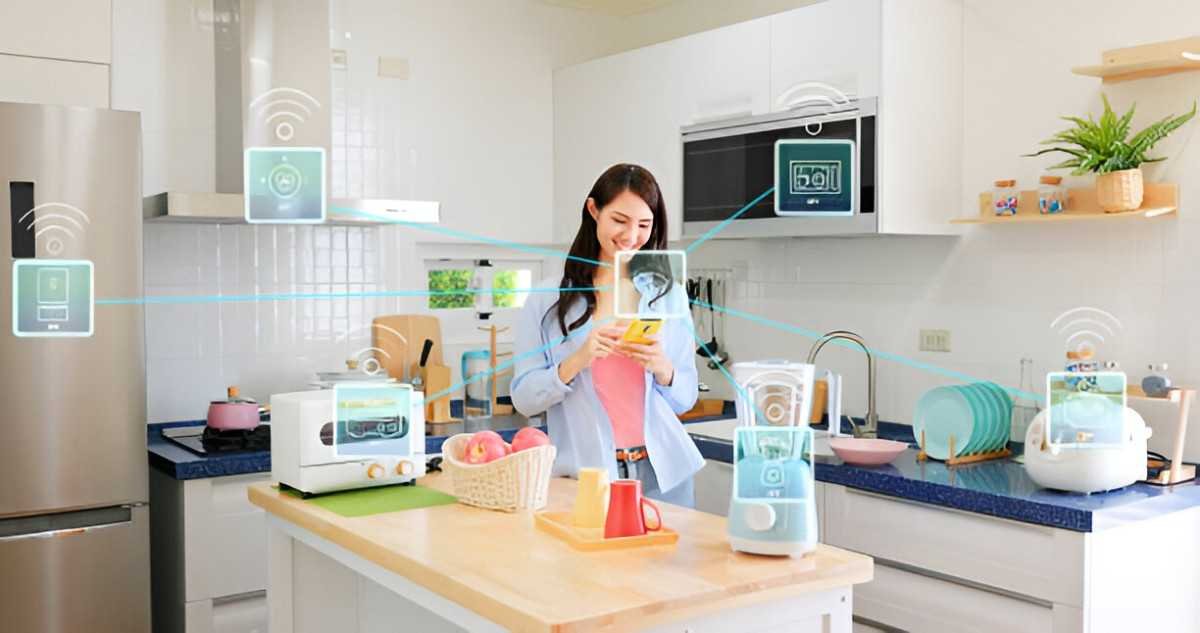As someone who values efficiency and convenience in the kitchen, I’ve spent a fair amount of time researching and testing smart kitchen appliances. The right technology can transform how we cook, save time, and even improve the quality of meals. But with so many options available, the process of choosing the best smart kitchen appliances can be overwhelming. In this detailed guide, I’ll walk you through the steps and considerations to help you make informed decisions, ensuring you select the appliances that meet your needs.
Table of Contents
Understanding Smart Kitchen Appliances
Before diving into the buying process, it’s important to understand what makes an appliance “smart.” A smart kitchen appliance is any device that uses Wi-Fi, Bluetooth, or other wireless technology to connect to your home network or smartphone. This allows for features such as remote control, automation, and integration with other smart home devices.
Examples of smart kitchen appliances include:
- Smart refrigerators: These come with touch screens, internal cameras, and the ability to track inventory and suggest recipes.
- Smart ovens: Some models let you control cooking temperatures, set timers, and monitor progress from your smartphone.
- Smart dishwashers: These can be controlled remotely and sometimes include features like cycle customization.
- Smart coffee makers: With these, you can brew coffee from anywhere via an app.
- Smart blenders and mixers: These appliances often come with preset functions, which you can control through an app.
Key Features to Consider When Buying Smart Kitchen Appliances
1. Connectivity
The most crucial aspect of any smart appliance is its connectivity. Most appliances use Wi-Fi or Bluetooth to connect to your smartphone or home network. Some also integrate with other smart home ecosystems like Amazon Alexa, Google Assistant, or Apple HomeKit.
- Wi-Fi-enabled appliances allow for remote access from anywhere, meaning you can control them even when you’re not at home.
- Bluetooth-enabled appliances have a shorter range but can still offer a seamless experience when you’re close by.
2. Ease of Use
A smart appliance should be simple to set up and easy to use. Many appliances come with apps that you can install on your smartphone or tablet to control the device. Look for appliances that have intuitive, user-friendly interfaces.
- Consider appliances that offer voice control integration with assistants like Alexa, Google Assistant, or Siri, making them even easier to operate while multitasking in the kitchen.
3. Compatibility
Ensure that the appliance you choose is compatible with other devices in your kitchen. For instance, if you already have a smart home system, it’s a good idea to check whether the new appliance integrates smoothly with your existing devices.
4. Energy Efficiency
Smart appliances tend to be more energy-efficient than their traditional counterparts. Many smart kitchen appliances come with energy-saving modes, and some even track energy consumption, helping you make more environmentally friendly choices.
5. Price
Smart kitchen appliances come in a variety of price ranges. It’s important to set a budget before you begin shopping. While smart features can offer significant advantages, the price should align with your needs and usage.
Types of Smart Kitchen Appliances
Let’s take a look at the different types of smart kitchen appliances and the factors to consider when choosing each one.
1. Smart Refrigerators
A smart refrigerator goes beyond the standard fridge, offering features like internal cameras to help you track your groceries, and smart temperature control for better energy efficiency.
Considerations:
- Size and Capacity: Make sure the fridge will fit in your kitchen and meet your storage needs.
- Connectivity: Look for fridges with Wi-Fi capabilities for remote control.
- Energy Efficiency: Smart fridges tend to be more energy-efficient, but be sure to check their energy consumption.
| Feature | Smart Fridge A | Smart Fridge B | Smart Fridge C |
|---|---|---|---|
| Capacity | 28 cu. ft. | 24 cu. ft. | 30 cu. ft. |
| Energy Efficiency | Energy Star rated | Energy Star rated | Energy Star rated |
| Wi-Fi Connectivity | Yes | Yes | No |
| Camera Integration | Yes | No | Yes |
| Price | $2,200 | $1,500 | $2,500 |
2. Smart Ovens
A smart oven allows you to control cooking temperatures and set timers remotely. These ovens are ideal for people who love to cook but may need extra time or flexibility.
Considerations:
- Cooking Functions: Check whether the oven has pre-programmed settings or customizable features.
- Smart Features: Look for ovens with app control, remote monitoring, or voice assistant integration.
- Size and Fit: Make sure the oven fits in your kitchen and meets your cooking needs.
| Feature | Smart Oven A | Smart Oven B | Smart Oven C |
|---|---|---|---|
| App Control | Yes | Yes | No |
| Temperature Range | 150°F – 500°F | 100°F – 550°F | 200°F – 500°F |
| Voice Control | Yes | Yes | No |
| Price | $1,800 | $1,200 | $1,500 |
3. Smart Dishwashers
Smart dishwashers can be controlled via an app, offering convenience in timing your dishwashing to fit your schedule. These also come with energy-saving modes and cycle options for more efficient washing.
Considerations:
- Cleaning Power: Look for dishwashers with a strong reputation for cleaning performance.
- Noise Level: If you have a quiet kitchen, pay attention to the decibel rating.
- Wi-Fi Features: Check for the ability to monitor progress remotely and receive notifications.
| Feature | Smart Dishwasher A | Smart Dishwasher B | Smart Dishwasher C |
|---|---|---|---|
| Wi-Fi Control | Yes | Yes | No |
| Noise Level | 45 dB | 50 dB | 48 dB |
| Energy Efficiency | Energy Star rated | Energy Star rated | Energy Star rated |
| Price | $900 | $1,200 | $1,000 |
4. Smart Coffee Makers
For coffee lovers, a smart coffee maker can be a game-changer. You can schedule brews, adjust strength, and even control brewing time from your smartphone.
Considerations:
- Capacity: Ensure the coffee maker brews enough cups for your household.
- Compatibility: Some smart coffee makers integrate with Alexa or Google Assistant for voice control.
- Brewing Customization: Look for customizable brewing settings, such as temperature or brew strength.
| Feature | Smart Coffee Maker A | Smart Coffee Maker B | Smart Coffee Maker C |
|---|---|---|---|
| Capacity | 12 cups | 10 cups | 8 cups |
| Smart Features | App control, Alexa | App control, Google Assistant | App control, Alexa |
| Brewing Options | Strength & temperature | Strength & timer | Strength & size |
| Price | $150 | $120 | $100 |
5. Smart Blenders
Smart blenders are perfect for smoothies, soups, and other blended items. They come with preset functions and can be controlled via an app.
Considerations:
- Power and Speed: Consider the motor power (measured in watts) and speed options available.
- Ease of Cleaning: A self-cleaning feature can save time and effort.
- App Control: Look for an app that offers recipe suggestions or remote control.
| Feature | Smart Blender A | Smart Blender B | Smart Blender C |
|---|---|---|---|
| Power | 1,000 watts | 800 watts | 1,200 watts |
| App Control | Yes | Yes | No |
| Self-Cleaning | Yes | No | Yes |
| Price | $250 | $150 | $350 |
How to Choose the Best Smart Kitchen Appliance for You
Step 1: Assess Your Needs
The first step is to think about your kitchen habits. Are you someone who enjoys cooking daily, or do you mainly need appliances for convenience? Consider what you use most often—whether it’s cooking, cleaning, or prepping—and choose appliances that will enhance those activities.
Step 2: Set a Budget
Smart appliances tend to be more expensive than their traditional counterparts, so it’s essential to set a realistic budget. Be mindful of the value each smart feature brings to the table. Sometimes, opting for a mid-range appliance with essential features may be more cost-effective than splurging on one with all the bells and whistles.
Step 3: Prioritize Features
Determine which features are most important to you. Do you need remote access? Energy efficiency? Integration with other smart devices? Make a list of must-have features and look for appliances that meet those needs.
Step 4: Check Reviews and Ratings
Finally, it’s crucial to read reviews and check expert ratings for the appliances you’re considering. User feedback can provide insight into reliability, ease of use, and any potential issues.
Conclusion
Choosing the best smart kitchen appliances is about finding the right balance between convenience, functionality, and budget. By understanding the key features, comparing different models, and assessing your needs, you can make a well-informed decision. Smart appliances have the potential to improve your kitchen experience, making everyday tasks simpler and more efficient. With this guide, I hope you feel more confident in selecting the appliances that best suit your lifestyle. Happy cooking!





